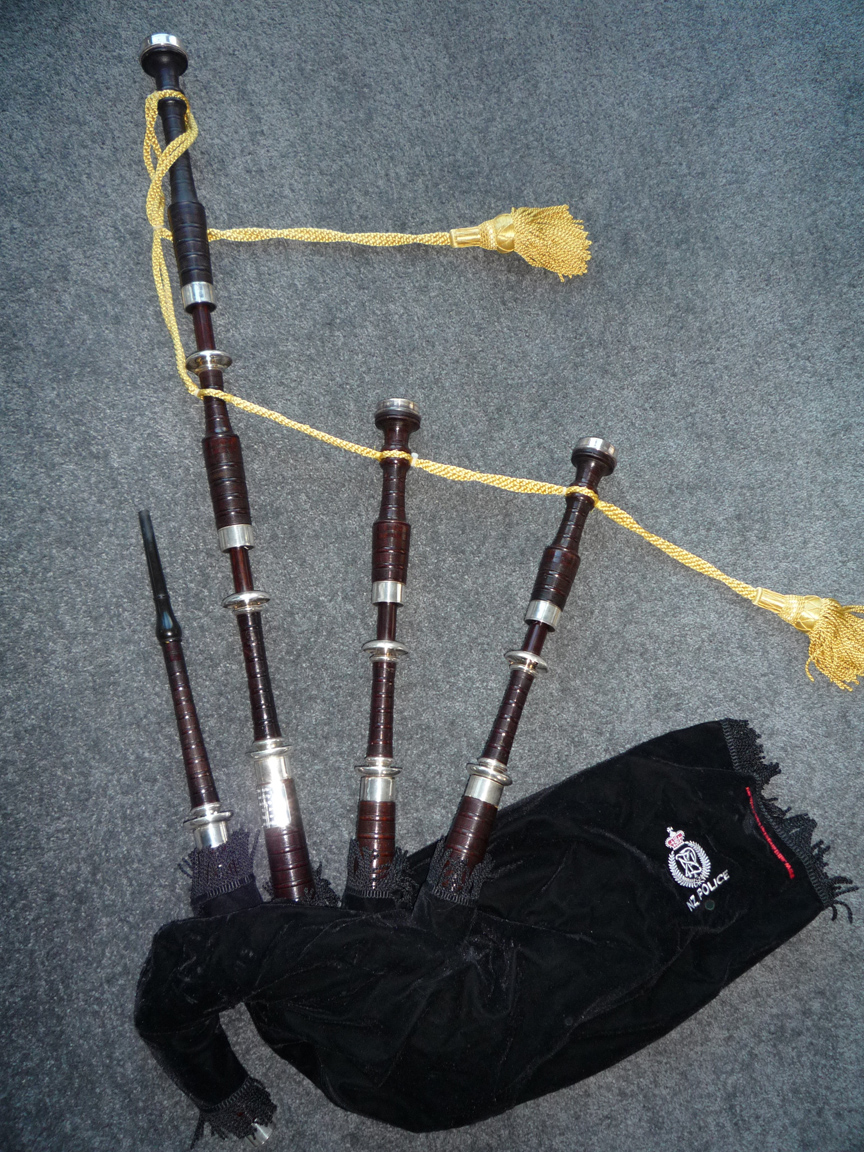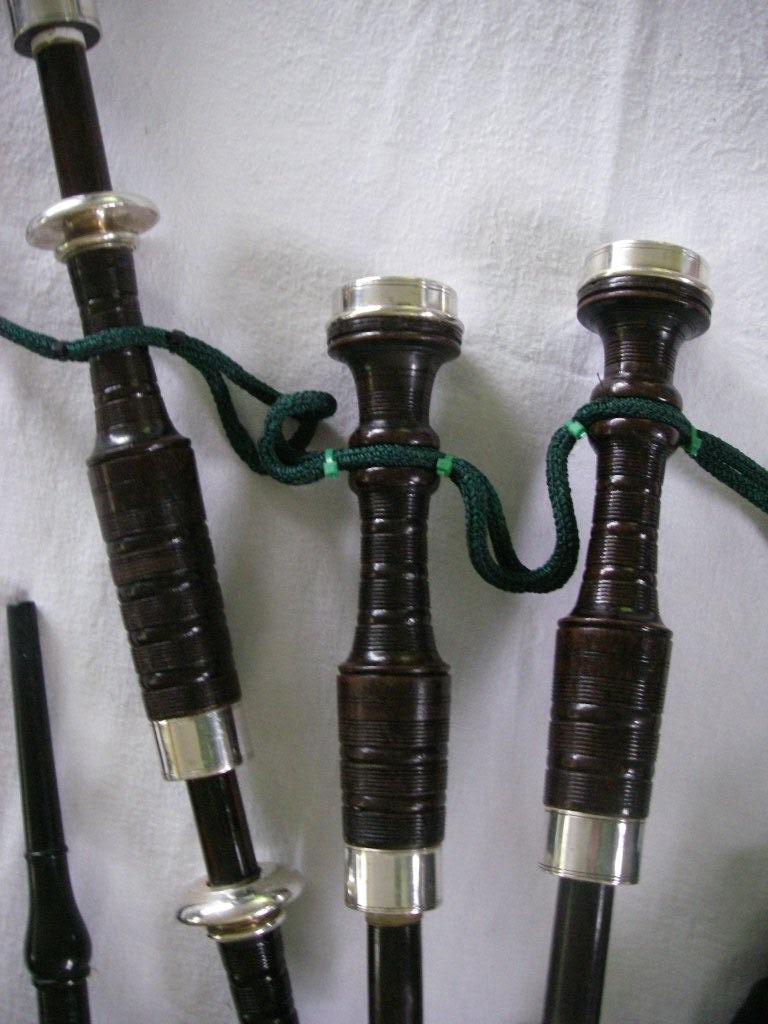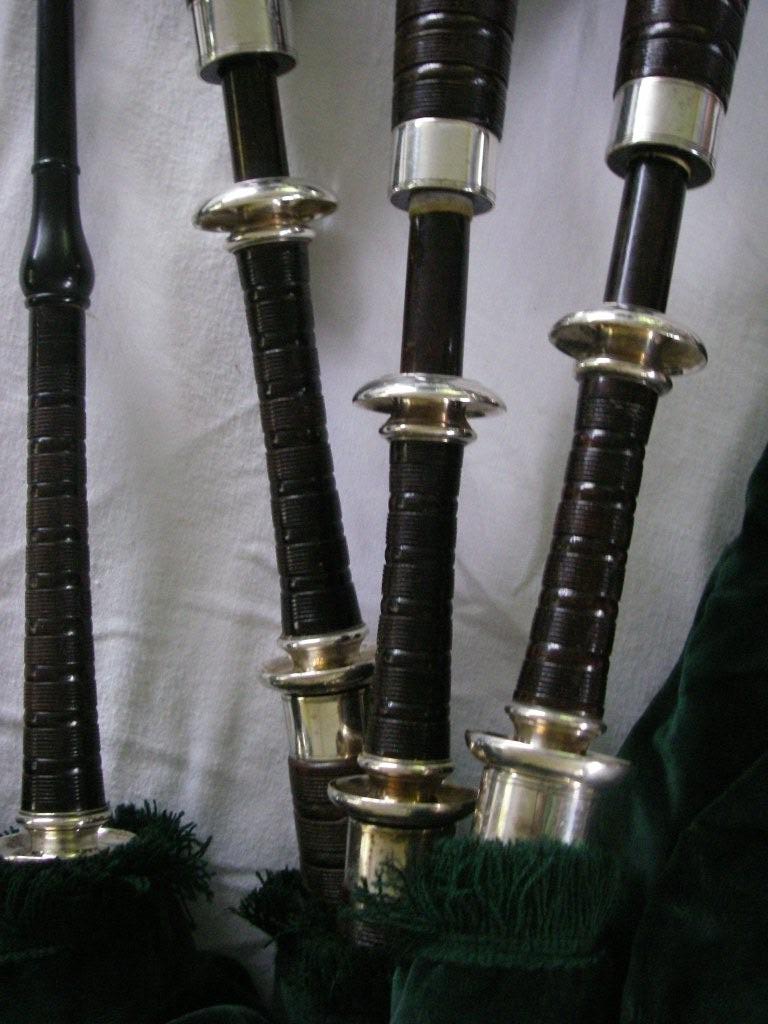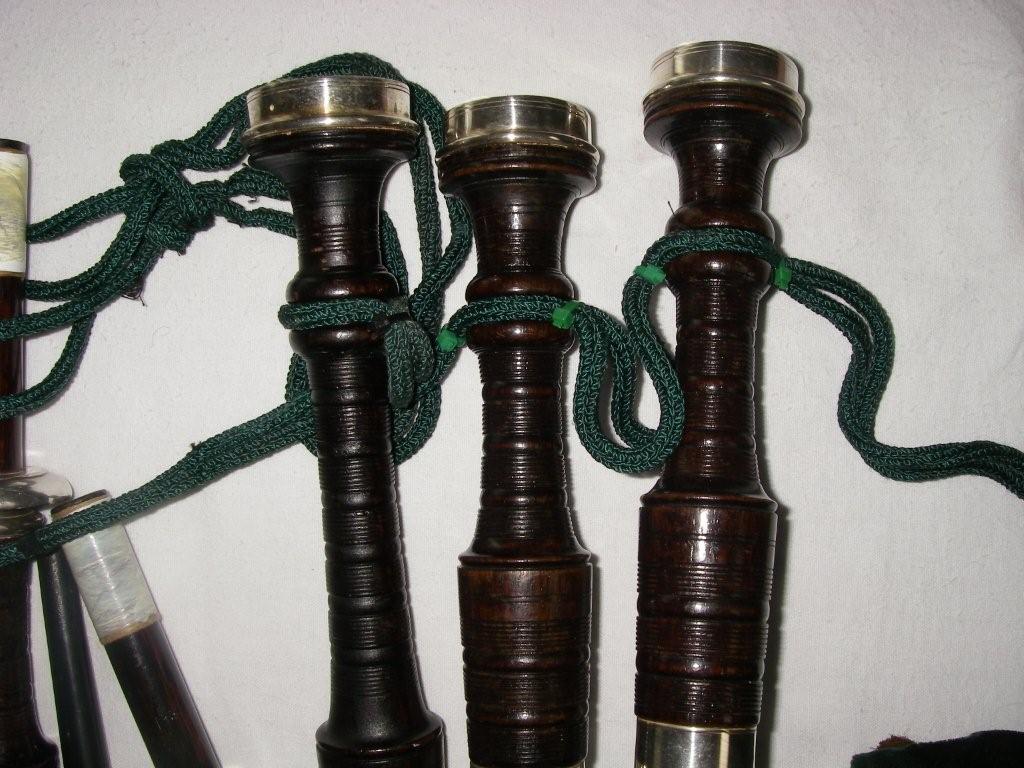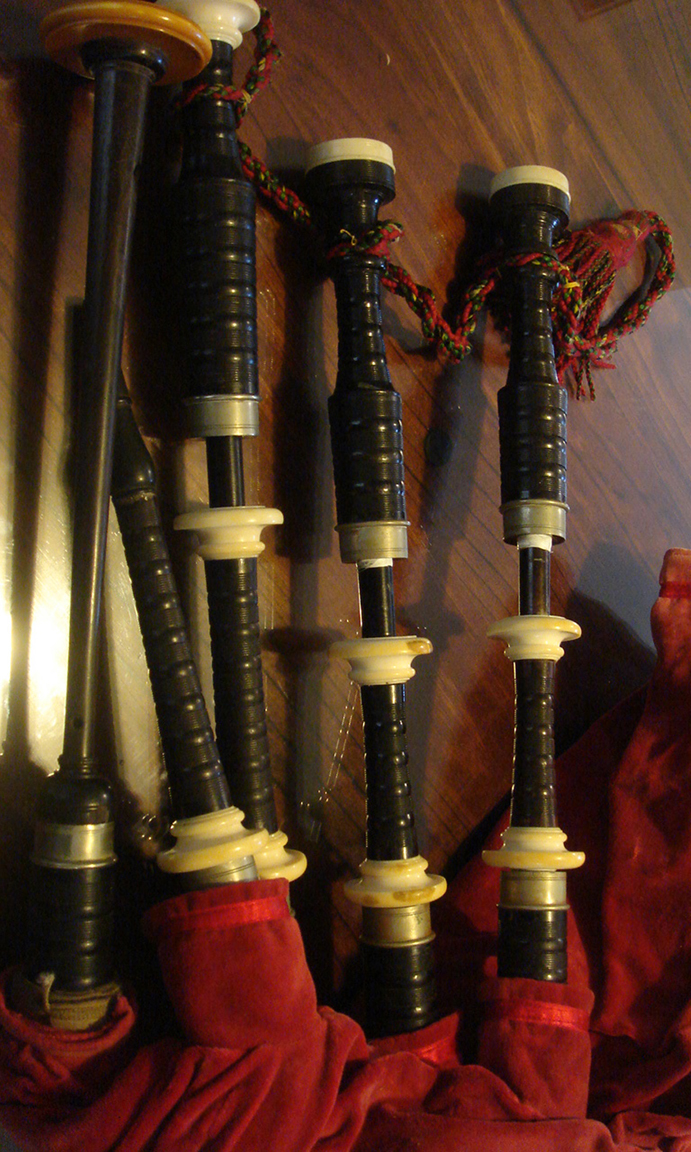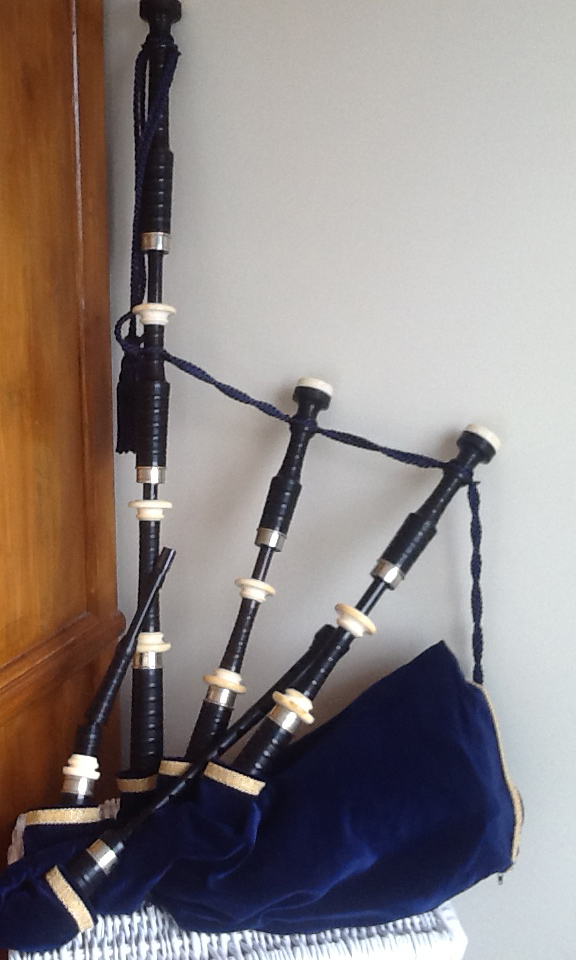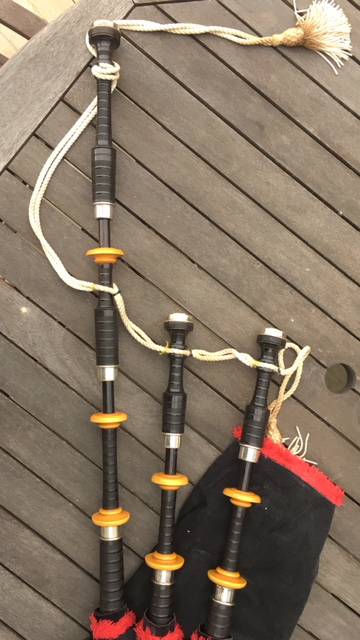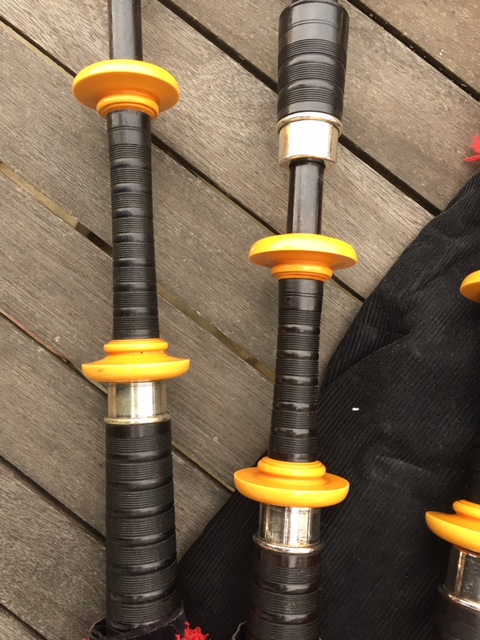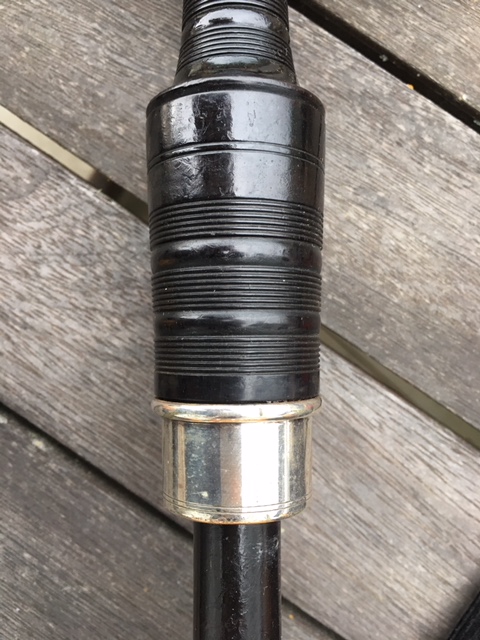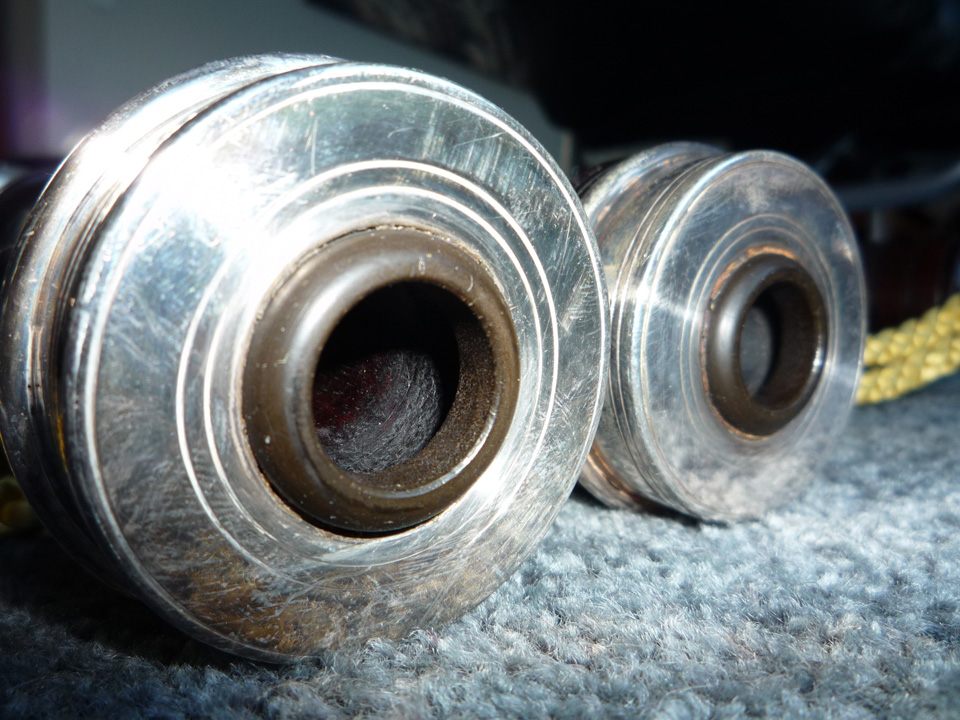Band History
The band was formed in 1936 by Detective Sergeant Neil McPhee. From all accounts McPhee was a redoubtable character, who not only taught the pipers, but also manufactured his own make of bagpipe for the Police Band. Initially the band's practice room was located above the stables of the old Taranaki Street Police Station in central Wellington.
Below is information and pictures provided by Hamish McCardle -
His full name was Neil John Salmon McPhee (Yes Salmon is correct, it was his mother’s maiden name).
He was originally from Timaru in New Zealand’s South Island, and learned to play the pipes there. He was
a large man, and joined New Zealand Police in 1925, where he spent his professional life, retiring as a Detective Sergeant after WWII.
He started the Wellington Police Pipe Band in 1936, and was the Band’s first Pipe Major. I have interviewed his son, and it’s not clear at which date McPhee started making bagpipes, but his son recalls his dad always out in his shed in the back of the house making anything from wood. He was described as an experimenter. The first pipes are likely to have been turned at his house in the early 1930s, as it is known he made several early sets for members of the Police Band.
After his retirement from Police, McPhee started his own bagpipe shop in Wellington late 1945, eponymously named “McPhees. There”, with his brother Alan McPhee, they turned bagpipes under the name McPhee for the next 25 years or so. The shop was later run from the 1970s by Mr Colin Addison who kept its operating name as McPhee and also turned bagpipes from 1970 until the late 1980s. Thereafter the shop was sold to non pipe turners and continues as a highland supplier to this day. I am not aware of McPhee pipes being stamped in any way.
You will see from the pictures McPhee pipes have several distinctive features. Almost all have small projecting mounts, even the nickel sets. According to his son, this was because McPhee could only source ivory from old billiard cue balls, so the diameter of the cue ball determined the width of the largest projecting mounts. A lack of suitable hard wood in New Zealand also forced another innovation, use of lignum vitae as the wood. Perhaps McPhee is the only turner ever to use this wood? It’s extremely dense, and notable as the only wood that does not float. He sourced it from visiting ships to Port of Wellington coming from South America. The pictured set are typical McPhee style pipes. The lignum vitae is a light colour, the tone produced is buzzy and leaves a distinctive taste in the piper’s mouth. This set was purchased from a Wellington man who bought them in 1962 from the McPhee shop. There are some blackwood McPhee pipes around as well, but they are rare as sourcing that wood in New Zealand was very difficult.
The band was formed in 1936 by Detective Sergeant Neil McPhee. From all accounts McPhee was a redoubtable character, who not only taught the pipers, but also manufactured his own make of bagpipe for the Police Band. Initially the band's practice room was located above the stables of the old Taranaki Street Police Station in central Wellington.
Below is information and pictures provided by Hamish McCardle -
His full name was Neil John Salmon McPhee (Yes Salmon is correct, it was his mother’s maiden name).
He was originally from Timaru in New Zealand’s South Island, and learned to play the pipes there. He was
a large man, and joined New Zealand Police in 1925, where he spent his professional life, retiring as a Detective Sergeant after WWII.
He started the Wellington Police Pipe Band in 1936, and was the Band’s first Pipe Major. I have interviewed his son, and it’s not clear at which date McPhee started making bagpipes, but his son recalls his dad always out in his shed in the back of the house making anything from wood. He was described as an experimenter. The first pipes are likely to have been turned at his house in the early 1930s, as it is known he made several early sets for members of the Police Band.
After his retirement from Police, McPhee started his own bagpipe shop in Wellington late 1945, eponymously named “McPhees. There”, with his brother Alan McPhee, they turned bagpipes under the name McPhee for the next 25 years or so. The shop was later run from the 1970s by Mr Colin Addison who kept its operating name as McPhee and also turned bagpipes from 1970 until the late 1980s. Thereafter the shop was sold to non pipe turners and continues as a highland supplier to this day. I am not aware of McPhee pipes being stamped in any way.
You will see from the pictures McPhee pipes have several distinctive features. Almost all have small projecting mounts, even the nickel sets. According to his son, this was because McPhee could only source ivory from old billiard cue balls, so the diameter of the cue ball determined the width of the largest projecting mounts. A lack of suitable hard wood in New Zealand also forced another innovation, use of lignum vitae as the wood. Perhaps McPhee is the only turner ever to use this wood? It’s extremely dense, and notable as the only wood that does not float. He sourced it from visiting ships to Port of Wellington coming from South America. The pictured set are typical McPhee style pipes. The lignum vitae is a light colour, the tone produced is buzzy and leaves a distinctive taste in the piper’s mouth. This set was purchased from a Wellington man who bought them in 1962 from the McPhee shop. There are some blackwood McPhee pipes around as well, but they are rare as sourcing that wood in New Zealand was very difficult.
This set was purchased new in 1947 and had the silver installed around 1950. The original owner has only recently parted with it. It is said to be particularly easy to tune. The ivory reflects stress-cracks perhaps from its previous existence as a billiard ball.
Neil McPhee
